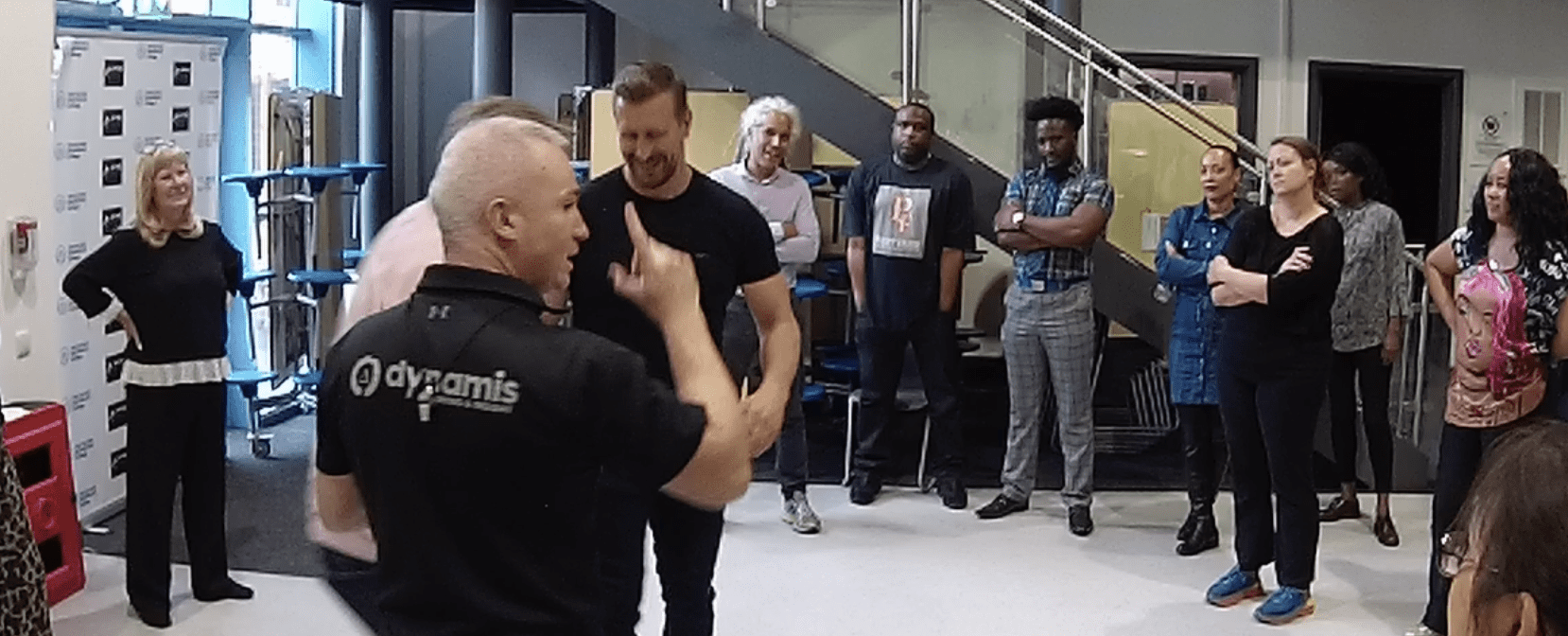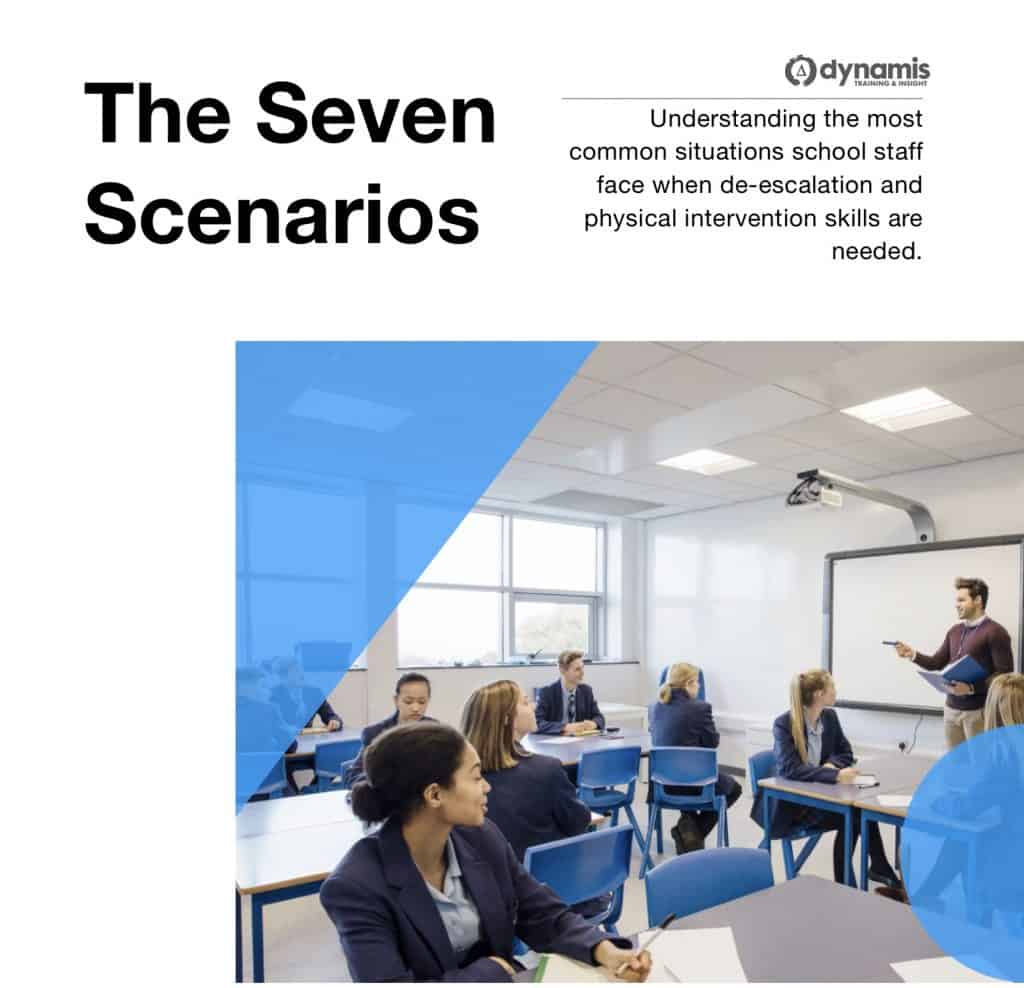De-Escalation and Physical Intervention in a Secondary Environment
When a member of education staff makes a decision about physically intervening in a ‘physical behaviour’ situation, it is possibly the most critical moment in their career.
The forseeable results of a poorly managed physical intervention at your secondary school or college could be:
– a child with a life-changing injury
– a staff member with a life-changing injury
– career-ending legal proceedings against the staff member
– career-limiting prosecution of management decisions
To respond safely, your staff must know how to:
– balance their duty of care for their own safety and others.
– use only force which is reasonable in the circumstances
– make split-second decisions about Necessity and Proportionality
– employ techniques which have been medically audited for use with children and young people
– avoid the use of dangerous and prohibited methods of restraint
– follow the Department of Education guidance on Use of Force (11 pages of succinct content)
– manage their fear of post-incident allegations
– write a legally appropriate incident report after the encounter
Our training is designed to keep your organisation and all of your people safe on every level – personally, professionally, emotionally and legally. It has been legally audited and medically reviewed for compliance. We are an ICM Quality Award Centre for the delivery of Workplace Violence Prevention and Management training.
OUR TRAINING FOR YOUR CONTEXT
The first thing to note about our training for secondary schools and sixth-form/colleges is that it is specific to that environment and the context of the encounters which are most likely for the people in that setting.
It is not strictly ‘Positive Handling’ training, such as we deliver for special schools and mainstream primary schools who are working with children who have special educational needs or disabilities. The mainstream secondary or sixth-form college context is different.
Over time we have evolved an approach to dealing with the behaviour of adolescent young people in a school environment which takes into account their brain-development, their social awareness, their ‘age and stage’ approach to conflict and their physical abilities (which can be considerable) and the vulnerabilities of a young growing body. As a company, I believe that in the UK we were pioneering in applying the SCARF model, developed by David Rock, to pinpoint conflict triggers in Education, Healthcare and Social Care settings. The “S” in the SCARF model stands for “status” and I can think of no better example of a setting where it is important to understand it than in a school building where hundreds of adolescent men and women are colliding with one another and in groups with frequency!
Behaviourally, we know that adolescents in a secondary environment:
– experience social status (the hierarchy, the pecking order, the need to ‘be somebody’) as a major driver for their behaviour
– are hugely influenced by group dynamics, are sensitive to in-group and out-group interactions
– when in conflict are influenced powerfully by the audience who is watching the incident
– if given an opportunity to withdraw and disengage from conflict, will take that option rather than ‘melt down’ in front of their peers.
Anecdotal evidence we have from hundreds of courses over the years (Dynamis has been teaching in the education sector since 2006) has taught us that most young people who struggle to manage their strong emotions WILL generally respond to professional and measured attempts to de-escalate their behaviour, especially where the social contract at their school is one of Dignity and Respect, where staff deploy consistent verbalisation strategies and are trauma-sensitive.
Here are some other issues that we know are ‘hot’ topics in secondary or college contexts at the moment:
Dealing with Intimidating or Abusive Behaviour towards Staff
However, it can be hard for staff to deploy appropriate de-escalation strategies where abuse directed towards them become very personal, or potentially damaging to their career, or over time wear away at the teacher’s professional presence (again with the issues of the audience, peer-oversight and the horizontal conflict that is often present in pressurised workplaces). This is where giving time to staff to practice their responses to such behaviour, while overlaying some insight into conflict triggers for adolescents and young people, can be hugely valuable in giving management at a school the confidence that staff (both teaching and non-teaching) have the tools to deal with behaviour confidently and effectively. On our courses we discuss the need for a ‘Showtime’ mindset to prepare for these critical moments, when the professionalism of the staff performance must shine through as they employ Redirections to deal with problem behaviour without escalating into direct conflict.
Breaking Up Fights
In our experience in helping many colleges and second-level institutions, it is pretty rare for secondary-level pupils to physically assault a member of staff. Far more likely in this context is the problem of student-student violence, where a member of staff becomes aware of a physical encounter between two (or more!) students and realises, in a critical moment, that they may have to do something about the situation presented to them. In situations like this, your staff really need to be standing on firm ground with respect to their Duty of Care: whose safety is a priority? how to we prioritise action? must I physically intervene to show professionalism? could I stand back and still be upholding my duty of care? These questions are absolutely critical to the safe resolution of ‘students fighting’ and taking time on a training day to investigate the issues and answer your team’s questions is really beneficial in our experience.
Managing the audience becomes a critical skill in these situations and is a terrifically difficult cognitive and psychomotor skill! Being at the centre of a large group of very aroused teenagers, who are upset about their friends winning or losing a physical fight, shouting and swearing and wanting to get involved…it takes some pre-planned and practiced responses from staff and the only way to develop those skills is by carrying out the appropriate ‘fire drills’ with your team to see how things roll!
The issues of knife crime and gang affiliation in the community setting
A further related issue here in our secondary environments is the growing threat of young people using edged weapons and knives to settle disagreements they have, or to climb a social hierarchy in a ‘status seeking’ display. From stories dating all the way back to the murder of London head teacher Philip Lawrence, the the more recent stories about supply teacher Victor Uzomah who was stabbed in Bradford and of course the murder of Ann Maguire in Leeds, we know that some school-age young people bath carry knives to school and will potentially use them. Coupled with this is the growing problem of gang affiliation and the status of knife-crime and knife-assault in the community. The fear of many head-teachers and Senior Leadership Teams is that community ‘beefs’ can spill onto school or college corridors. Incidents in the community on monday night can precipitate non-student intrusions on to school grounds, bringing violence and chaos to the safe learning environment we are trying to create.
By working with you on the most critical issues you face AND understanding how the social fabric of your school – and your ethos – works, we hope to provide a tailored, effective and beneficial training intervention with your team which increases safety for all of your people.




